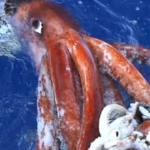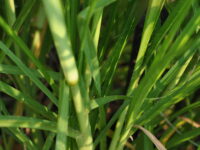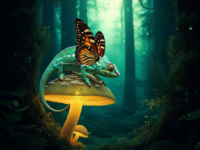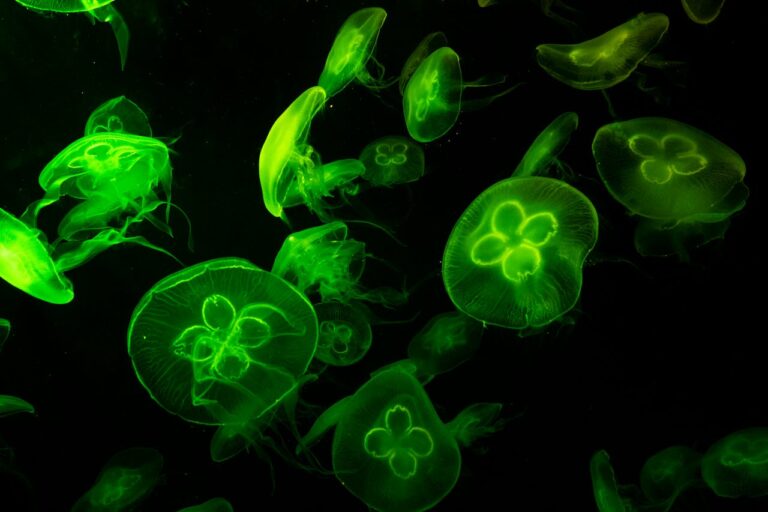Have you ever walked along a beach at night and noticed the waves glowing as though they were lined with stars? Or watched fireflies dance through a summer evening, their tiny bodies blinking like fairy lights? Bioluminescence, nature’s light show, is one of those phenomena that can leave even the most logical among us completely awestruck. It’s mesmerizing, it feels magical, and yet, it’s entirely real—produced by living creatures themselves.
But how does this incredible phenomenon work, and why does it even exist in nature? Keep reading to uncover the secrets of bioluminescent creatures, learn where you can witness these glowing wonders, and explore how humans have celebrated them throughout history.
What is Bioluminescence?
Bioluminescence is the ability of living organisms to produce and emit light. Unlike the light from a bulb or the sun, this light is “cold,” meaning it doesn’t produce heat. And it’s not just one specific group of creatures capable of bioluminescence—it spans a wide spectrum of life, from marine organisms to insects and even fungi.
Think of it as nature’s survival toolkit, where light becomes less about aesthetics and more about function. Whether it’s used to scare off predators, lure prey, or communicate with mates, bioluminescence is as purposeful as it is beautiful.
Evolutionary History of Bioluminescence
How did bioluminescence begin? That’s one of those million-dollar questions that keeps scientists fascinated.
It’s believed that bioluminescence first evolved over 400 million years ago, primarily in marine environments where sunlight couldn’t penetrate. Imagine you’re a tiny creature in the deep, pitch-black ocean. Glowing can suddenly become your secret weapon to either outsmart predators or draw in unsuspecting prey. It’s survival, lit up in neon.
Over time, land-based organisms like fireflies and fungi picked up their own glowing abilities for reasons ranging from reproduction to nutrient decomposition. It’s a reminder that nature, with all its complexities, is endlessly adaptable.
Types of Bioluminescent Organisms
Bioluminescence isn’t reserved for one kind of creature; it’s like a VIP club that thousands of organisms are a part of.
Marine Bioluminescence
When people talk about bioluminescence, marine life often steals the spotlight (pun intended). From glow-in-the-dark plankton that lights up crashing ocean waves to anglerfish that use glowing lures in the deep sea, the ocean is home to the most breathtaking bioluminescent displays.
Have you heard of dinoflagellates? These microscopic organisms put on a dazzling blue-green light show when disturbed, earning them the nickname “sea sparkles.”
Land Dwellers
On land, fireflies are probably the most famous bioluminescent creatures. They flash their signature lights during warm summer nights to attract mates, creating those storybook-perfect evenings we all swoon over.
But did you know certain fungi also glow? Known as “foxfire” or “fairy fire,” these fungi emit a soft, eerie glow, often in decaying wood. It’s hauntingly beautiful, like a natural Halloween night decoration.
A Few Oddities
Some bioluminescence comes with extra flair. Think crystal jellyfish, which can glow in multiple colours, or railroad worms, which produce two distinct colours of light—red and green.
The Science Behind the Glow
Okay, not to get overly scientific, but bioluminescence is essentially a chemical reaction. It happens when a molecule called luciferin reacts with oxygen, often under the influence of an enzyme called luciferase. The magic happens within specialized cells called phagocytes, or in some cases, bacteria living symbiotically inside the host creature.
The colour of the light varies depending on the creature, its habitat, and the specific chemicals involved—ranging from neon blues seen in the ocean to the warm yellows of fireflies.
Bioluminescence in Human Culture
Bioluminescence has inspired humans for centuries, appearing in myths, art, and literature.
- Mythology & Folklore
Fireflies, often called “lightning bugs,” appear in multiple cultural stories. For example, in Japanese folklore, fireflies are thought to be the souls of departed lovers.
- Modern Art and Design
Artists have attempted to emulate bioluminescence using glow-in-the-dark paints, neon lights, and even bioengineered plants. Bioluminescence bridges the gap between nature and human creativity, pushing us to reimagine how light can illuminate our world.
Where to Experience Bioluminescence
Want to see the magic for yourself? Here are some destinations where you can witness breathtaking bioluminescent displays.
- Mosquito Bay, Puerto Rico
Home to the world’s brightest bioluminescent bay. Here, dinoflagellates light up the waters, making every paddle stroke glow.
- Toyama Bay, Japan
Famous for the “firefly squid” that glow in the millions during spawning season.
- Jervis Bay, Australia
Its glowing blue waves draw travellers from across the globe.
- The Great Smoky Mountains, USA
Visit during summer evenings for the synchronized flashing of fireflies—a mesmerizing natural light performance.
Conservation and the Future of Bioluminescent Organisms
While bioluminescence dazzles us, it also faces threats. Pollution, global warming, and habitat destruction are endangering countless marine and land-based bioluminescent species.
For instance, light pollution is a major problem for fireflies. Artificial lighting disrupts their signals, making it harder for them to find mates. Similarly, waste and chemicals dumped into oceans harm organisms like dinoflagellates.
Conserving these creatures is about more than keeping our beaches glowing at night—it’s about preserving complex ecosystems that we may not yet fully understand.
How to Get Involved
- Reduce light pollution in your home and community by turning off unnecessary outdoor lights.
- Support eco-tourism businesses that actively protect bioluminescent habitats.
- Share the magic of bioluminescence with others—it might just inspire them to help out too!
Nature’s Light Show Deserves a Standing Ovation
Bioluminescent creatures remind us that the world is full of wonder just waiting to be discovered. From dazzling ocean bays to glowing fungi hidden in forests, their displays inspire creativity, curiosity, and a deeper appreciation for the natural world.
Want more tips for your nature adventures? What about updates on must-see destinations for nature’s light show? Subscribe to our newsletter and never miss a glow-worthy moment!
Meta Data
Meta Title
Bioluminescence Wonders Explained – Nature’s Living Lights
Meta Description
Discover how bioluminescent creatures light up nature’s stage, the science behind the glow, and must-visit destinations to experience nature’s light show.





















0 Comments